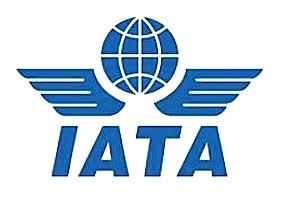IATA, the International Air Transport Association, has upgraded its global outlook for the airline industry to a US$12.7 billion profit in 2013 on $711 billion in revenues. This is $2.1 billion better than the $10.6 billion profit projected in March of this year and an improvement on the $7.6 billion profit generated in 2012.
Margins remain weak. On revenues that are expected to total $711 billion this year, the net profit margin is expected to be 1.8%. Indicative of the characteristically razor-thin profits of the airline industry, even this small margin will make 2013 the third strongest year for airlines since the events of 2001. In 2007 the industry earned 2.9% net profit margin ($14.7 billion) and in 2010 airlines generated a 3.3% net profit margin ($19.2 billion).

“This is a very tough business,” said Tony Tyler, IATA’s Director General and Chief Executive. “The day-to-day challenges of keeping revenues ahead of costs remain monumental. Many airlines are struggling. On average airlines will earn about $4 for every passenger carried—less than the cost of a sandwich in most places.”
Profitability is thin, but there is a solid performance improvement story over the last seven to eight years. More efficient use of assets is the main contributor. The industry load factor is expected to average a record high of 80.3% in 2013 – 6.0 percentage points above 2006 levels. Additionally, airlines have found new sources of value that have increased the contribution of ancillary revenues from 0.5% in 2007 to over 5% in 2013.
Macro-economic factors have also contributed. Oil prices are expected to average $108/barrel (Brent), a little below the $111.8 average for 2012, in part due to increasing supply from North America. Meanwhile, the outlook for global economic growth has deteriorated slightly since March as the recession in Europe proves to be deeper than expected. The beneficial impact of lower fuel prices is expected to offset the adverse effect of weaker economic growth, providing a moderate boost to industry profitability.
“Generating even small profits with oil prices at $108/barrel and a weak economic outlook is a major achievement. Improved performance is what’s keeping airlines in the black. Airlines are putting more people in seats. For the first time in history, the industry load factor is expected to average above 80% for the year. With ancillary revenues topping 5%, it is clear that airlines have found new ways to add value to the travel experience and to shore-up the bottom line,” said Tyler.
The $12.7 billion profit represents a Return on Invested Capital (ROIC) of 4.8%. This will enable the industry to pay for its debts and pay equity investors a small dividend. “But returns of 4.8% are still materially lower than the 7% to 8% average cost of capital required for the industry. If airlines are to find the $4 trillion to $5 trillion needed to finance the projected fleet development over the next 20 years, even more improvements are needed,” said Tyler.
Key Forecast Drivers:
Passenger:
The industry load factor is expected to average 80.3%, which is a record high. Overall passenger capacity is expected to expand 4.3%, which is under the 5.3% anticipated growth in demand for the year. This will be the second consecutive year that airlines keep capacity additions below the growth of demand, in spite of high numbers of new aircraft deliveries. All regions are expected to see demand grow faster than capacity. The tight supply and demand conditions, however, are not expected to lead to significant yield improvements. Passenger yields are expected to grow a modest 0.3% in 2013. A total of 3.13 billion passengers are expected in 2013 – the first time in history that passenger numbers rise above the three billion mark.
Cargo:
The cargo business continues to suffer the brunt of the impact of the weak outlook in developed economies. Freight volumes are expected to be basically stagnant at 52.1 million tonnes. Effectively, there has been no significant growth since 2010 when freight volumes were 50.7 million tonnes. After a 6.3% fall in yields in 2012, we expect a further contraction of 2.0% in 2013 as capacity conditions remain much more challenging than in passenger markets.
Oil Prices:
Following the recent softening in oil prices, the average price for Brent crude oil is expected to be $108/barrel for the year. This is a slight downward revision from the $109.5/barrel previously forecast and it is below the $111.8 average in 2012. Nonetheless, this still is nearly twice as high as it was in 2006 when the average price/barrel was $65.1.
Cost Control and Revenue Generation:
Jet fuel prices increased some 55% over the period 2006–2013. This was the biggest contributor to the 23% increase in unit costs over the same period. This unit cost increase would have been much higher had airlines not kept non-fuel unit costs virtually unchanged in real terms, along with implementing significant programs to improve fuel efficiency. Intense competition has meant that fares alone have not been able to recoup this cost. Airlines have found new ways to add value to passenger journeys, boosting ancillary revenues. Ancillary revenues contributed $36 billon of the $680 billion in revenue earned in 2012. This 5% of total revenues is expected to grow significantly in 2013. In 2007, ancillary revenues contributed $2.5 billion, or 0.5% of the industry’s $510 billion revenue line.
Economic Growth:
Overall economic performance remains weak. GDP is expected to grow 2.2% this year, which is only slightly above the 2.1% growth in 2012. It is about half the 4% growth recorded in 2006. Trade, however, is the more important driver of air transport demand and airline profitability, and prospects are a little better here with an acceleration forecast from 2.5% growth last year to 4% in 2013. While trade among developed economies continues in the doldrums as a result of European economic uncertainty, it is booming on routes linked to the emerging economies. This closely reflects the pattern of growth for the airline industry.
Structural Changes:
Structural changes have improved the ability of the industry to generate profits. Improved financial performance has followed consolidation that is most evident in North American markets. Additionally, the financial crisis has made access to capital more difficult, limiting new market entrants. Market exits for less robust carriers have increased across all business models.
Regional Performance:
All regions are expected to report a profit in 2013, with some being stronger than others. Overall, a trend is emerging that sees strengthening profitability among larger or niche airlines. The profitability of many smaller airlines—without the scale economies, market diversification or niche markets—faces greater challenges from high fuel prices and weak economic performance.
Asia-Pacific airlines are expected to post a combined profit of $4.6 billion in 2013 (up from the previous projection of $4.2 billion). It will lead all regions both in terms of absolute profits and earnings before interest and taxes (EBIT) margin (5.0%). The main driver is strong growth in China and long-haul markets, supported by buoyant trade flows and other business activities. Stronger growth is also expected from Japan as market-stimulating measures take effect in the region’s second largest economy. This is helping to overcome weakness in cargo markets in which Asia-Pacific airlines are the major players with a 38% market share. Overall demand from passenger travel in the region is expected to grow 6.3%, ahead of the expected 5.6% growth in capacity.
North American airlines are expected to deliver a $4.4 billion profit, significantly up from the $3.6 billion projected previously. Structural changes, such as consolidation and efficiency measures in the domestic market are the main drivers of this better performance. Demand growth from passengers will be the slowest among all regions at 1.7%, reflecting both the maturity and sluggishness of the US domestic market. But this is significantly above the 0.7% expected expansion in capacity, and therefore further improvements in asset utilisation are expected.
European airlines are expected to report profits of $1.6 billion, double the previous projection of $0.8 billion. While this is a significant improvement, the region’s EBIT margin is expected to be just 1.3%, second lowest after Africa at 0.9%. Improvements in the Eurozone crisis have stalled in recent months, giving rise to fears of a third false dawn. In 2011 and 2012, improving trends dissipated when the crisis took unexpected turns for the worse. Demand remains strong with expected Revenue Passenger Kilometers (RPK) growth of 4.0%, well ahead of a 2.7% capacity expansion. Economic conditions are the weakest in this region but consolidation on the North Atlantic market and within Europe is helping to improve financial performance.
Middle East carriers are expected to show a profit of $1.5 billion, slightly improved from the previous projection of $1.4 billion. Passenger demand is expected to continue apace at 15.0%, well ahead of the anticipated 12.6% capacity expansion. The region’s successful hubs continue to connect long-haul traffic, with particular strength in facilitating connectivity to emerging economies in Asia and Africa.
Latin American airlines are expected to post a $0.6 billion profit, unchanged from the previous forecast. Passenger demand (9.8%) and capacity (7.8%) growth are second only to the Middle East. This growth is boosted by the effects of buoyant trade and other business flows with Asia and North America. The region’s EBIT margin of 2.8% is an improvement on 2012 (2.1%), but it is significantly lower than the leaders in North America (4.2%) and Asia-Pacific (5.0%).
African airlines continue to be the weakest performers, with passenger load factors below 70%, operating margins averaging less than 1% and profits of just $100 million. Compared with the $100 million loss of 2012, however, this is a better performance. Passenger capacity growth (6.7%) is expected to be outstripped by demand growth of 7.5%. This will improve load factors. The region’s airlines continue to face high operating costs, especially for fuel, which is on average 21% more costly than in other parts of the world. Long haul services face stiff competition from carriers outside the region, while significant aero-political barriers still stand in the way of enhanced regional connectivity.




